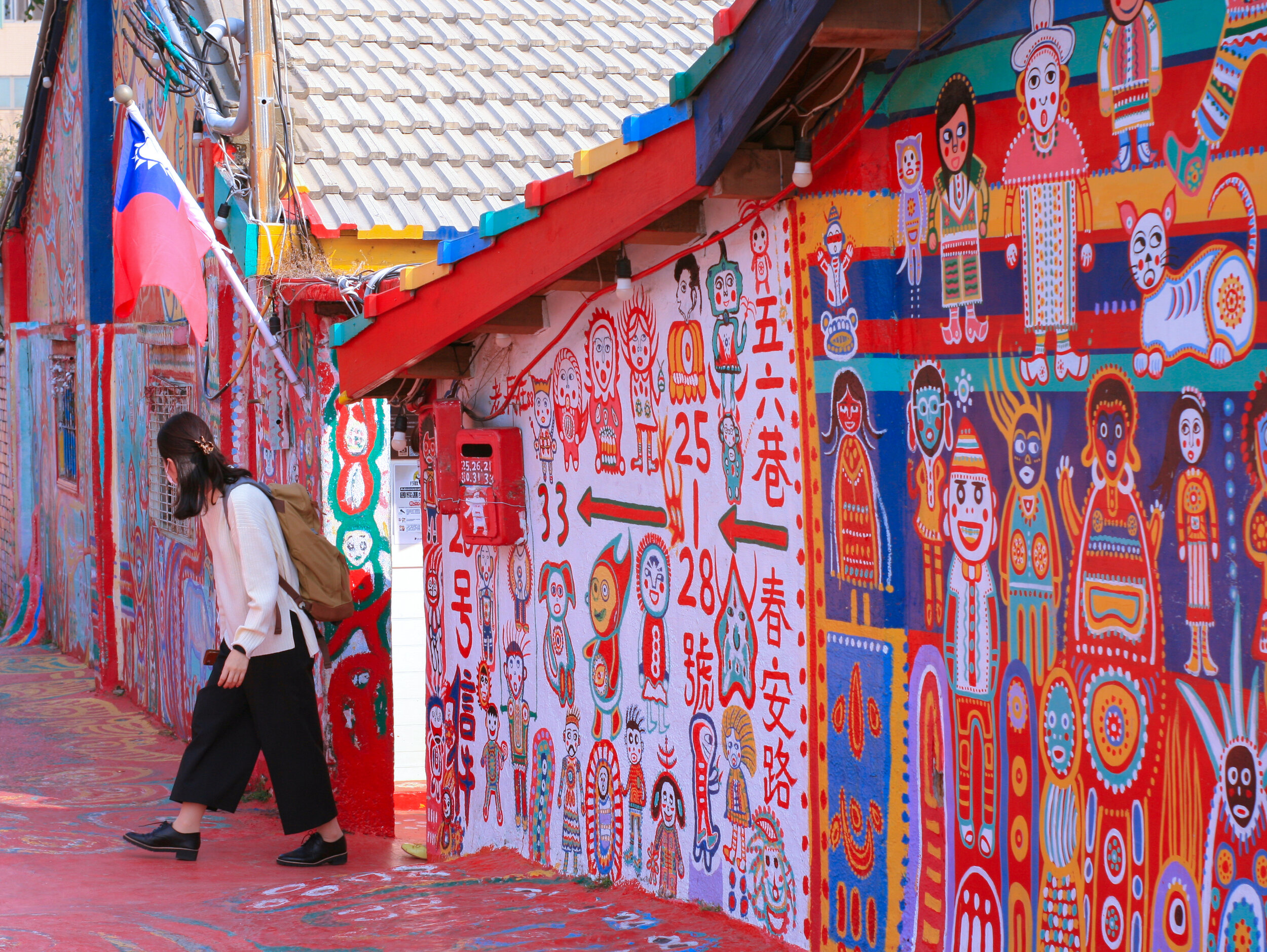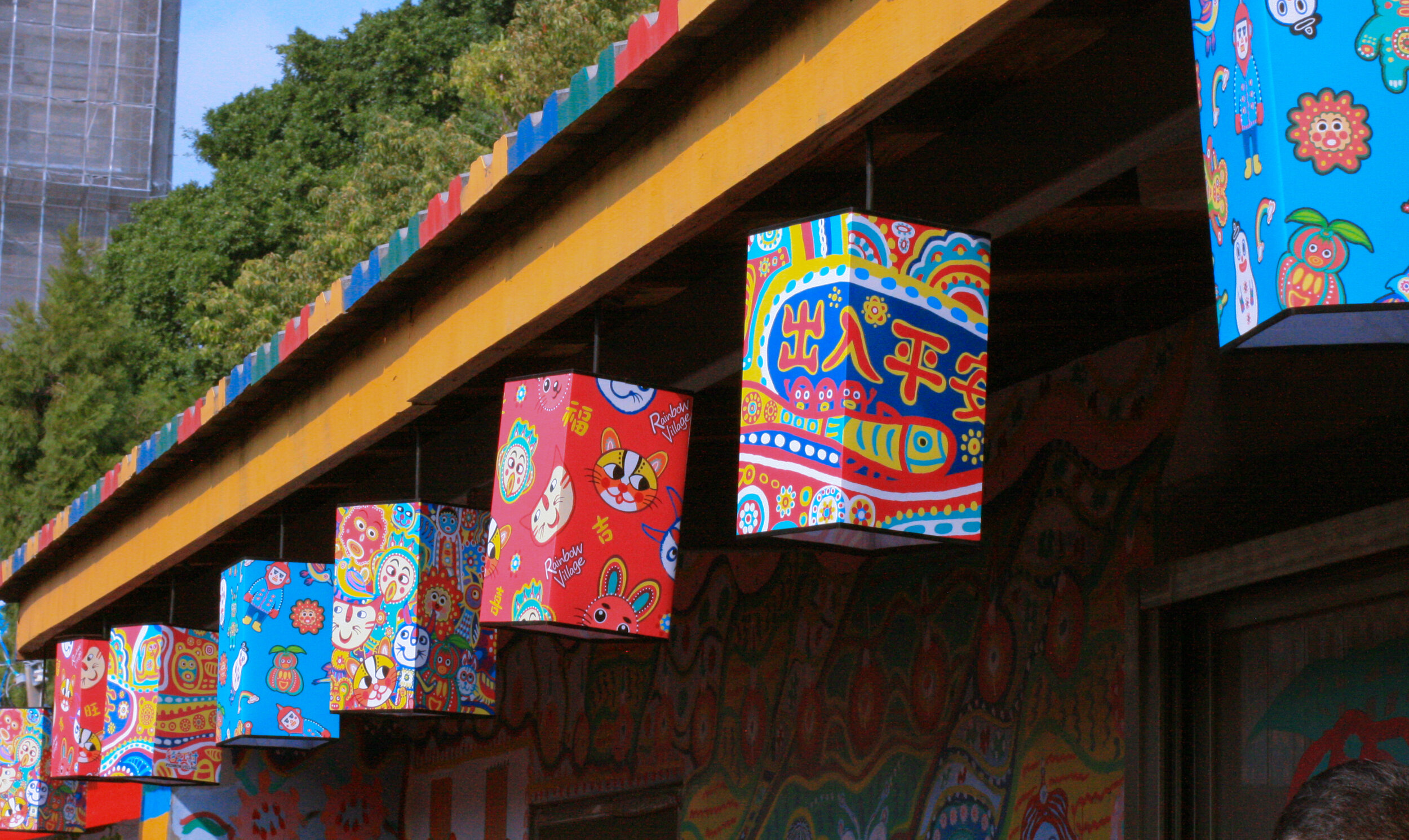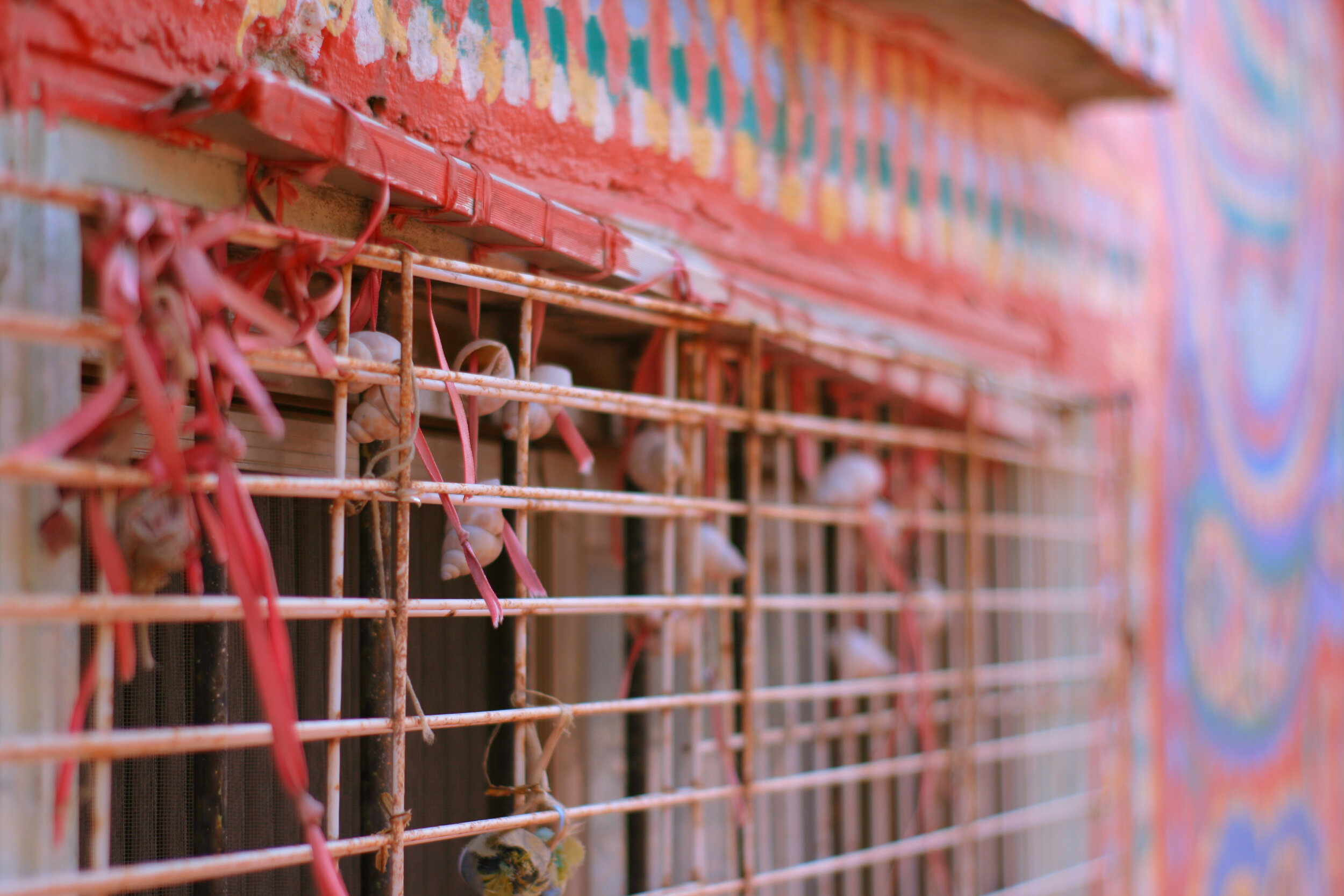The Rainbow Village: A Powerful Reminder
Part of my Taiwan series.
Here’s the story: a former KMT soldier from Hong Kong, Huang Yung-Fu, settled in a village in Taichung, Taiwan. Once temporary military housing, the village became a permanent settled after the war. But by 2010, the government wanted to demolish the neighborhood to make way for new developments, so most of Huang’s neighbors took the settlement money and moved out. Soon, he was the only one left.
Out of boredom, Huang picked up a brush and began painting a bird inside his house. From there, he began painting and painting—people, birds, cats, dogs, and even Bruce Lee—until his house and what was left of the surrounding homes were entirely covered in colorful designs.
A group of university students saw his colorful village, and petitioned that his paintings be saved from demolition. In 2011, the government finally agreed. (source).
It’s such a cool story. Now dubbed “Rainbow Grandpa,” Huang can bask in the knowledge that he saved his home from destruction. Not only that, he’s now 97 and still wakes up at 3am to paint.
I admire the hell out of this guy. Unfortunately, he wasn’t there when I visited in February as part of my ten day trip in Taiwan.
paint chips on the ground
Those are the facts. Before I get more into my point, let me explain how to get there.
I took an all-day tour in Taichung with Klook (tour here), which drove us to the site. You can see the SUPER bright buildings easily from afar.
This square block of homes is a popular tourist attraction, one of the biggest in Taichung besides perhaps Gaomei Wetland. Because of that, expect lots of crowds. There’s info guides in Chinese and a couple in English. The village also hosts a little rainbow take-out cafe.
Getting there, like anywhere in Taichung, can be difficult without a car. It’s not as far as Gaomei, but with no subway system, it’s a bit out of the way coming from the city center. It’s close to Xinwuri station.
If you’re coming from Taichung Station, the best way is to take the Fuxing/Shuttle, then either bus 800, 56 or 75. Alternatively, you can take buses 30 or 40 the whole way. Of course, you can always uber (roughly NT $320-410) or rent a car, especially if you’re not solo!
Rainbow Village is also close to Taichung’s Art Street, which is a little pedestrian road for art, performances and souvenirs.
Now, to the reminder.
So many blogs tout this place as the perfect #instagrammable location, which…..ehhhh. Don’t get me wrong, it is. The place is stunning. I’m not gonna pretend I didn’t go to take photos for instagram and this blog, and I don’t begrudge people who go for their next profile picture.
However I really do not want this post to reduce this little village to just that. There’s so much more to value about this place than just its aesthetics—we must value it not only as a culture site that means so much to Huang and the city of Taichung, but also as an act of resistance that is relevant beyond Taiwan’s borders.
This story has important messages: Art has the power to make change. One person can make a difference. Claiming and protecting your home is vital in more ways than one.
seashells tied to a windowsill in the Rainbow Village
This story reminds me of the conversation of gentrification in my own home country. The loss of a community, both tangible or in spirit, happens everywhere.
The circumstances of those affected might be different: they might be impoverished or disabled; they might be veterans like Huang, or ethnic minorities. So often, systematic injustices and failures strip the disenfranchised of their homes.
While the former residents of Rainbow Village were offered a settlement to find new housing, this is VERY frequently not the case and such money isn’t a fix-all. Kang Han-ming, the current manager of the Rainbow Village says of these veterans who leave their homes: "When they move out, people feel isolated. They feel they have no roots. That's why a lot of older veterans who move to new buildings get sick” (source).
At least Rainbow Grandpa has his kept his roots. He often sits in the village, talking with the tourists who’ve come to admire his work. “I'll never get lonely with all these visitors” (source).
It’s an uplifting story. It’s also a reminder.
Thanks for reading.






